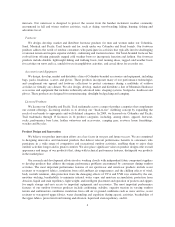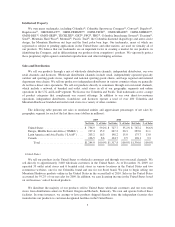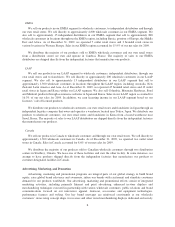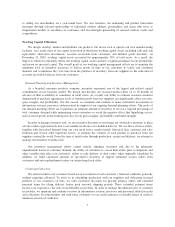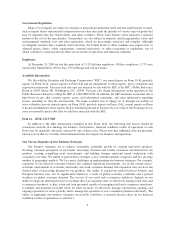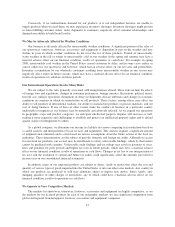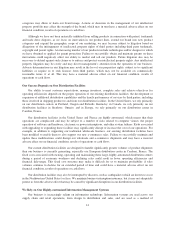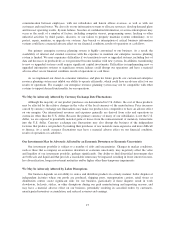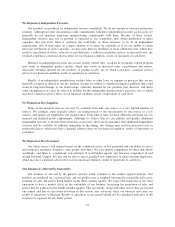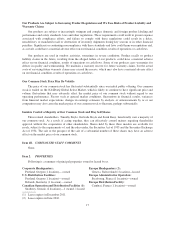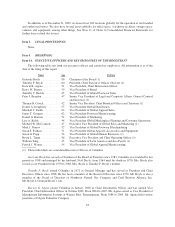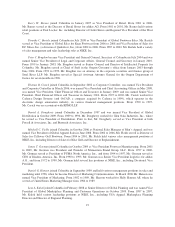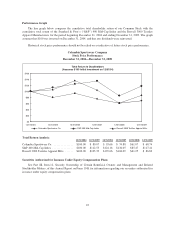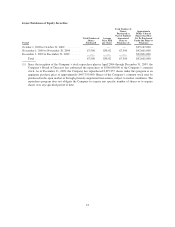Columbia Sportswear 2009 Annual Report Download - page 21
Download and view the complete annual report
Please find page 21 of the 2009 Columbia Sportswear annual report below. You can navigate through the pages in the report by either clicking on the pages listed below, or by using the keyword search tool below to find specific information within the annual report.categories may dilute or harm our brand image. Actions or decisions in the management of our intellectual
property portfolio may affect the strength of the brand, which may in turn have a material adverse effect on our
financial condition, results of operations or cash flows.
Although we have not been materially inhibited from selling products in connection with patent, trademark
and trade dress disputes, as we focus on innovation in our product lines, extend our brand into new product
categories and expand the geographic scope of our marketing, we may become subject to litigation based on
allegations of the infringement of intellectual property rights of third parties including third party trademark,
copyright and patent rights. An increasing number of our products include technologies and/or designs for which
we have obtained or applied for patent protection. Failure to successfully obtain and maintain patents on these
innovations could negatively affect our ability to market and sell our products. Future litigation also may be
necessary to defend against such claims or to enforce and protect our intellectual property rights. Any intellectual
property litigation may be costly and may divert management’s attention from the operation of our business.
Adverse determinations in any litigation may result in the loss of our proprietary rights, subject us to significant
liabilities or require us to seek licenses from third parties, which may not be available on commercially
reasonable terms, if at all. This may have a material adverse effect on our financial condition, results of
operations or cash flows.
Our Success Depends on Our Distribution Facilities
Our ability to meet customer expectations, manage inventory, complete sales and achieve objectives for
operating efficiencies depends on the proper operation of our existing distribution facilities, the development or
expansion of additional distribution capabilities and the timely performance of services by third parties, including
those involved in shipping product to and from our distribution facilities. In the United States, we rely primarily
on our distribution centers in Portland, Oregon and Robards, Kentucky; in Canada, we rely primarily on our
distribution facilities in Strathroy, Ontario; and in Europe, we rely primarily on our distribution center in
Cambrai, France.
Our distribution facilities in the United States and France are highly automated, which means that their
operations are complicated and may be subject to a number of risks related to computer viruses, the proper
operation of software and hardware, electronic or power interruptions, and other system failures. Risks associated
with upgrading or expanding these facilities may significantly disrupt or increase the cost of our operations. For
example, in addition to supporting our traditional wholesale business, our existing distribution facilities have
been modified to enable them to also support our new e-commerce sales. Failure to successfully maintain and
update these modifications could disrupt our wholesale and e-commerce shipments and may have a material
adverse effect on our financial condition, results of operations or cash flows.
Our current distribution facilities are designed to handle significantly greater volumes of product shipments
than our business is currently generating, especially our European distribution center in Cambrai, France. The
fixed costs associated with owning, operating and maintaining these large, highly-automated distribution centers
during a period of economic weakness and declining sales could result in lower operating efficiencies and
financial deleverage. This fixed cost structure may make it difficult for us to maintain profitability if sales
volumes continue to decline for an extended period of time and could have a material adverse effect on our
financial condition, results of operations or cash flows.
Our distribution facilities may also be interrupted by disasters, such as earthquakes (which are known to occur
in the Northwestern United States) or fires. We maintain business interruption insurance, but it may not adequately
protect us from the adverse effect that may be caused by significant disruptions in our distribution facilities.
We Rely on Our Highly-customized Information Management Systems
Our business is increasingly reliant on information technology. Information systems are used across our
supply chain and retail operations, from design to distribution and sales, and are used as a method of
14


